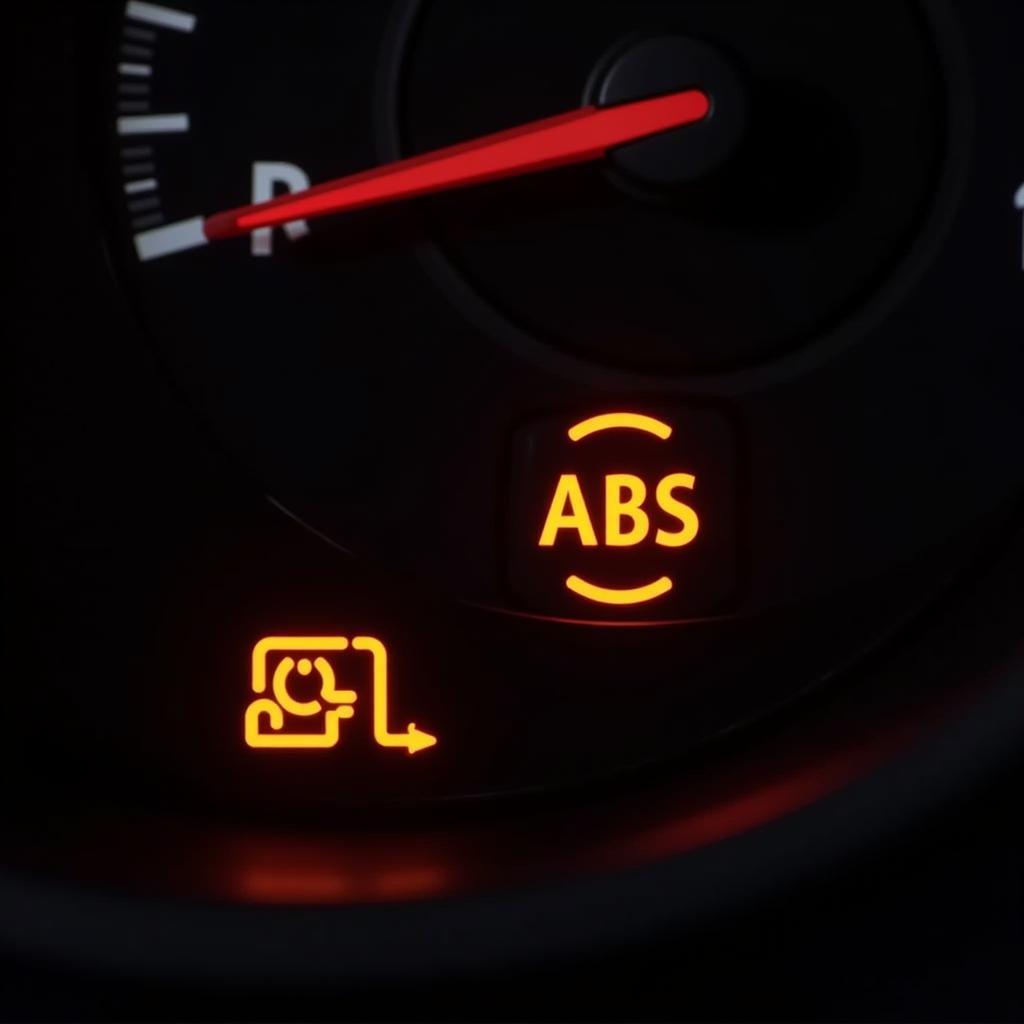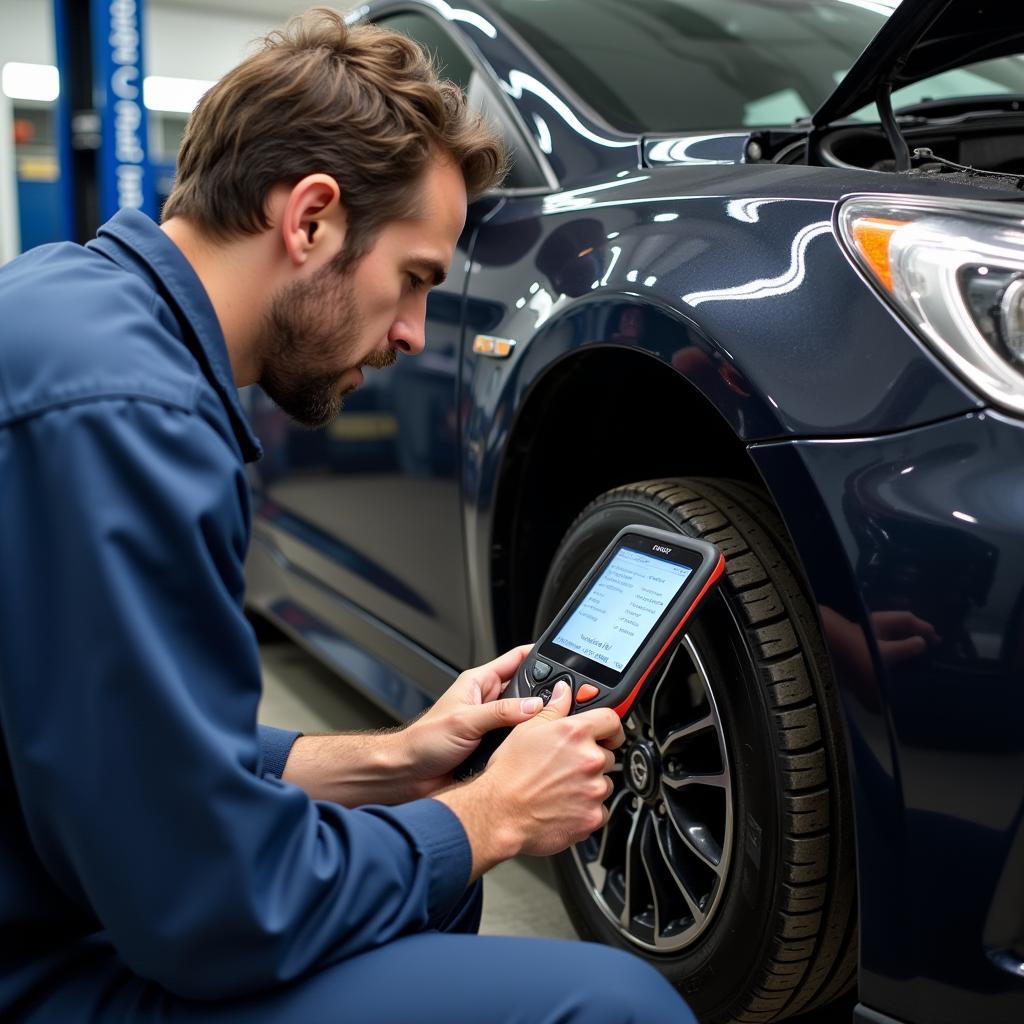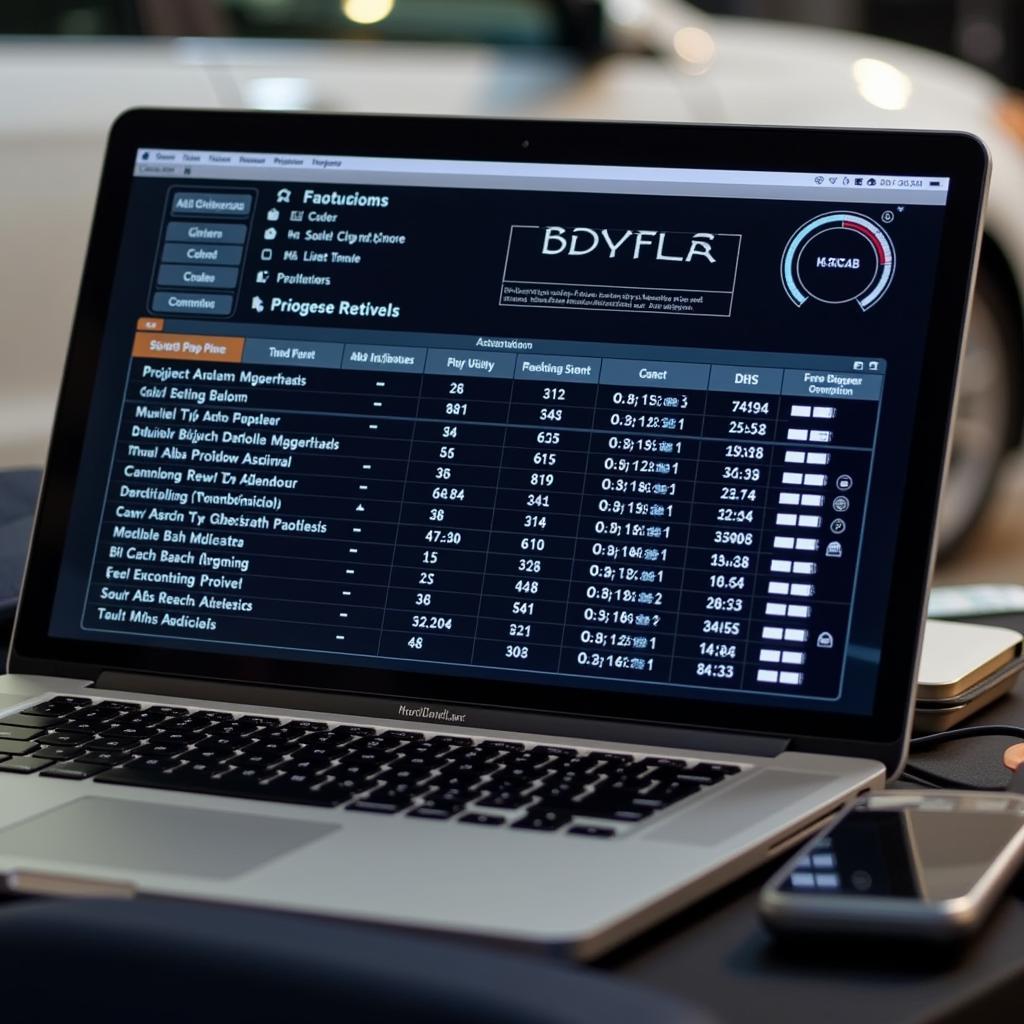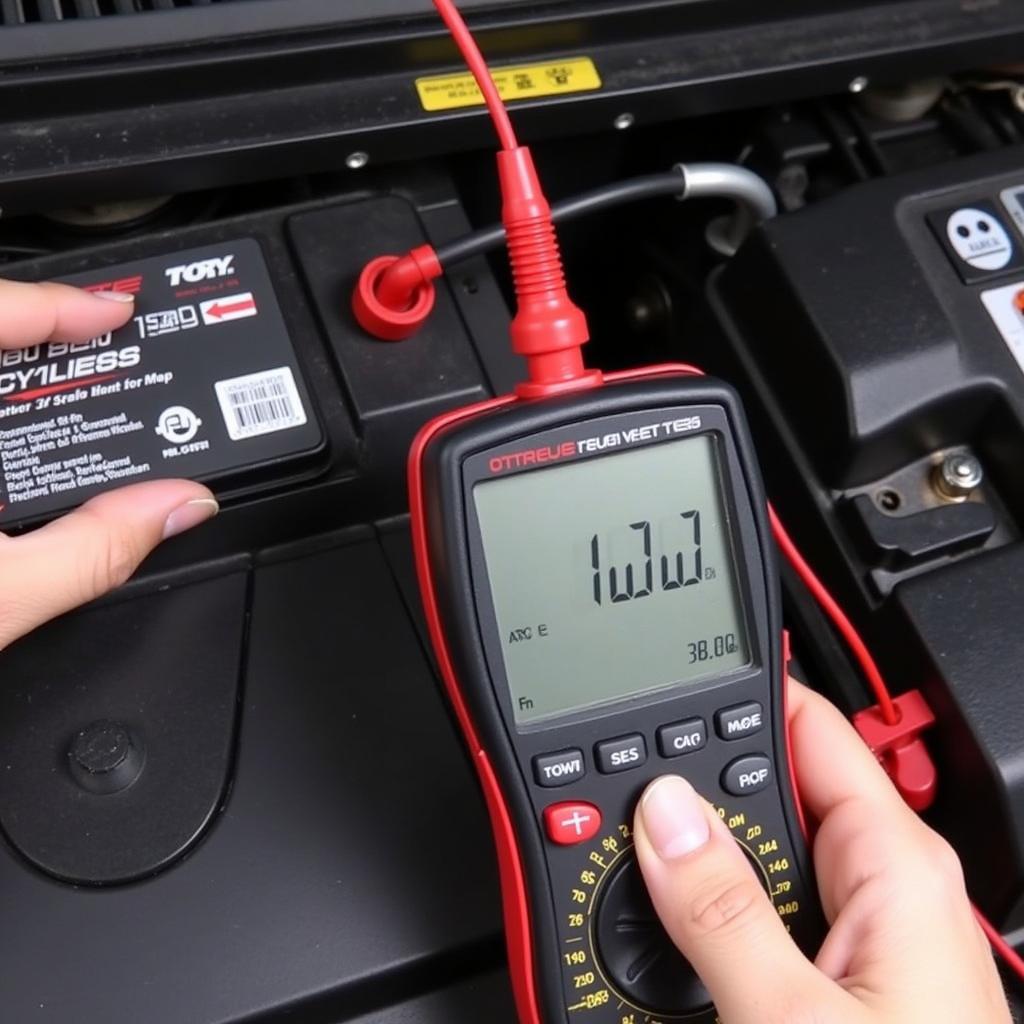The anti-lock brake system (ABS) warning light on your dashboard is a crucial safety indicator. When illuminated, it signals a potential problem with your vehicle’s ABS, a system that prevents wheels from locking up during braking, enhancing steering control and reducing stopping distances. Ignoring this warning light could compromise your safety on the road.
 ABS warning light illuminated on a car dashboard
ABS warning light illuminated on a car dashboard
Understanding Your ABS System
Before delving into troubleshooting, it’s crucial to grasp the basics of your car’s ABS. This system comprises several key components:
- Wheel Speed Sensors: These sensors, positioned at each wheel, continuously monitor wheel speed and relay this information to the ABS control module.
- ABS Control Module: This electronic brain receives data from the wheel speed sensors. If it detects a wheel locking during braking, it modulates the brake pressure to that specific wheel, preventing lock-up.
- Hydraulic Control Unit: This unit houses valves that regulate brake fluid pressure to each wheel based on instructions from the ABS control module.
Common Reasons for the ABS Warning Light
A glowing ABS warning light can stem from several issues:
- Faulty Wheel Speed Sensors: A malfunctioning or dirty wheel speed sensor can disrupt data transmission to the ABS module, triggering the warning light.
- ABS Control Module Malfunction: A faulty ABS control module might misinterpret data or fail to regulate brake pressure properly.
- Hydraulic Control Unit Issues: Problems within the hydraulic control unit, like a malfunctioning valve, can also activate the warning light.
- Low Brake Fluid: Insufficient brake fluid level can disrupt the hydraulic pressure required for proper ABS function.
- Blown Fuse or Electrical Problem: A blown fuse or a wiring issue within the ABS system can disrupt its operation.
 Mechanic inspecting car brake system with a diagnostic tool
Mechanic inspecting car brake system with a diagnostic tool
Diagnosing the Problem: What to Do When Your ABS Light Turns On
While the ABS warning light signals a potential issue, it doesn’t pinpoint the exact cause. Here’s a step-by-step approach to help you diagnose the problem:
- Check Your Brake Fluid: Begin with a visual inspection of your brake fluid reservoir. Ensure the fluid level is within the recommended range. Low brake fluid requires immediate attention – add the appropriate brake fluid and check for leaks.
- Inspect Fuses and Wiring (If Comfortable): If you’re familiar with car electricals, locate your vehicle’s fuse box and consult your owner’s manual to identify the ABS fuse. Check for a blown fuse and replace it if necessary. Visually inspect the ABS wiring for any signs of damage or loose connections.
- Seek Professional Diagnostics: If the brake fluid level is fine and the fuses are intact, it’s time to seek professional diagnostics. Modern vehicles require specialized scanning tools to read ABS fault codes stored in the control module. These codes provide specific insights into the root cause of the warning light.
You can find more information on specific vehicle models and their common brake warning light issues on our website. For instance, we have articles dedicated to troubleshooting brake warning light problems for various makes and models: Chrysler Sebring 2010 Brake Warning Light Coming On While Driving, Jeep Wrangler Brake Warning Light, and more.
Remote Diagnostics and Software Solutions: The Future of Car Repair
The automotive landscape is rapidly evolving, and so are the methods of diagnosing and resolving vehicle issues. Remote diagnostics and software solutions are gaining prominence, offering a convenient and efficient approach to addressing ABS warning light problems.
Here’s how it works:
- Remote Scanning and Diagnostics: Utilizing specialized software and a device that plugs into your vehicle’s OBD-II port, our skilled technicians can remotely access your car’s computer system to retrieve fault codes and diagnose the ABS problem.
- Software Updates and Reprogramming: In some instances, the ABS warning light might be triggered by software glitches. Remotely, we can install the latest software updates or reprogram the ABS control module to rectify the issue.
 Remote car diagnostics using a laptop
Remote car diagnostics using a laptop
“Remote diagnostics allows us to pinpoint issues with incredible accuracy,” says John Miller, Senior Automotive Engineer at Car DiagTech. “We can quickly analyze data, identify the root cause, and in many cases, resolve the problem remotely without the need for a physical visit to the repair shop.”
Addressing the ABS Warning: Your Safety is Paramount
Never ignore an illuminated ABS warning light. While your vehicle might still brake without ABS functionality, you lose a crucial safety net, potentially extending your stopping distances and increasing the risk of accidents, especially on slippery surfaces.
FAQs: Anti-Lock Brake System Warning Light
Q: Can I still drive with the ABS warning light on?
A: While you might retain regular braking functionality, driving with an active ABS warning light is strongly discouraged. Your vehicle’s safety features are compromised, increasing the risk of accidents.
Q: How much does it cost to fix an ABS light issue?
A: Costs vary significantly depending on the root cause. A simple sensor replacement might be relatively inexpensive, while a faulty ABS control module could be more costly.
Q: Can I check the ABS system myself?
A: While you can perform basic checks like inspecting brake fluid and fuses, comprehensive ABS diagnostics require specialized tools and expertise best left to professionals.
Q: Is it safe to ignore the ABS light if my brakes feel normal?
A: Absolutely not. The ABS system activates during emergency braking situations, so even if your brakes feel normal under regular conditions, a fault in the system can have serious consequences.
Q: How often should the ABS system be inspected?
A: It’s recommended to have your ABS system inspected annually or as part of your regular vehicle maintenance schedule.
Conclusion
The ABS warning light, though seemingly small, plays a significant role in your vehicle’s safety. Understanding its implications, potential causes, and the importance of prompt diagnosis is crucial for every car owner. Whether through traditional repair methods or leveraging the convenience of remote diagnostics and software solutions, prioritize addressing ABS warning light issues to ensure your safety and that of others on the road.

